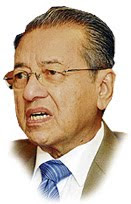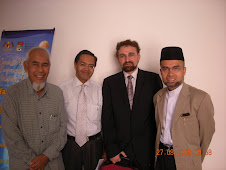Islamic funds growth stalls but investable assets grow, says Ernst and Young
The 3rd annual Ernst and Young Islamic Funds and Investments Report (IFIR 2009), released today at the World Islamic Funds and Capital Markets Conference states that Shari'a sensitive investable assets in 2008 in the GCC and Asia touched $736bn as compared to $267bn in 2007.
Ernst & Young RSS feed
Mergers and acquisitions activity in the MENA region down by 66% in Q1 2009 compared to Q1 2008, Ernst and Young
Uncertainty and impact of the credit crunch top risks facing real estate companies
Ernst and Young introduces region's first monthly spa benchmark report
Middle East IPOs raise $83.6m in first quarter of 2009, says Ernst and Young
Global Takaful market could touch $7.7bn in 2012, reports Ernst and Young
Sobhi Batterjee vies for Ernst and Young's World Entrepreneur of the Year Award
World's largest oil companies to deliver over $375bn of investment this year despite oil demand concerns
The rules of the game have permanently changed - Ernst and Young
Ernst and Young awarded 'Best Takaful Advisory Firm'
» more Ernst & Young news
In computing the total asset size this year, the report included Awqaf and Endowments, Takaful operators in Malaysia, SWFs in the MENA region and Asia, and it also includes the markets of Pakistan and South East Asia - all of which where not included in last year's figures.
This translates into a potential annual revenue pool of $3.86bn for the Islamic asset management industry. Fund sizes however, remain small, with over 50% having assets under management of $20m or less.
25 Islamic funds were liquidated in 2008 and Q1 2009. 18 were liquidated in all of 2006 and 2007 combined. The number of new funds launched has dropped from 271 in the years 2006 and 2007 to only 89 in the year 2008 and first quarter of 2009. This mirrors the severe market correction shown by a 50% decline in the MSCI Index for the period of November 2007 to March 2009 compared to a 40% return in the period May 2005 to November 2007.
Key geographic markets
The largest concentration of Islamic funds remains in the Middle East and equity funds lead the field for choice of asset type. 19% and 23% of Islamic funds are domiciled in Saudi Arabia and Malaysia respectively. Saudi Arabia holds $19.28bn in total assets under management for Islamic funds.
Malaysia holds $4.579bn in assets. The untapped markets in Asia and MENA are a source of growth for the Islamic funds industry due to their inherently large Muslim populations. These markets, where Islamic finance is still in its infancy, include Indonesia (207 million), Pakistan (161 million), India (150 million), Bangladesh (132 million), Turkey (71 million) and Iran and Nigeria (both at 64 million).
Returns from Islamic funds
Islamic indices have performed poorly worldwide - we see the average return from Islamic equity funds fall to minus 39% in 2008 as compared to a 23% return in 2007. In the first quarter of 2009, the average return stood at minus 3.7%. Average Islamic fixed income fund return dropped from 3% in 2007 to 1% in 2008 and Q1 2009.
Commodity prices declined during the second half of 2008, but signs of recovery in this asset class are emerging and in Q1 2009, average return of commodity funds stood at 10%, a substantial increase from the minus 20.01% experienced in 2008. Islamic cash funds remained constant, providing an average return of 3.9% in 2008 as compared to 3.4% in 2007. In Q1 2009, average returns are at 0.7%. Average returns from real estate funds dropped from 8% in 2007 to minus 11% in 2008 and minus 5% in Q1 2009.
Sukuks and Takaful
Sukuk issuance has slowed as spreads widen - sukuks worth $15.5bn were issued in 2008 as compared to $47.1bn in 2007. Ernst & Young's IFIR 2009 report estimates that sukuks around the value of $27.5bn will be issued in 2009.
Guidance and risks facing Islamic funds
According to Sameer Abdi, Head of Ernst & Young's Islamic Finance Services Group, 'Last year, we highlighted the phenomenal rate of growth experienced in the Islamic asset management industry. The landscape has changed significantly now, yet the fundamentals of the Islamic fund industry remain strong. With almost $50bn in fund assets under management and a large, expanding and untapped Muslim population, there are likely to be considerable opportunities in the future. This is a time when strategic choices have to be made and market participants have to adapt to survive.'
Touching upon the risks faced by Islamic asset managers as outlined in IFIR 2009, Omar Bitar, Managing Partner, Middle East Advisory Services at Ernst & Young Middle East said, 'Two-thirds of all players manage less than $100m each in Islamic assets - the global competitive landscape is fragmented and a shakeout appears likely. Firms will need to select a product and distribution platform that is aligned with its strategy and position themselves as alpha-seekers or asset gatherers to set their fee structure. Pressure on fund managers to consider a lean and efficient corporate structure through the outsourcing of non-core business activities is now more than ever.'
Commenting on the key risks facing the Islamic funds industry, Sameer, said:
'The business risks landscape for Islamic asset management has changed substantially since 2008. Revisions of expected returns have caused some investors to withdraw capital and previously robust business models have struggled to cope with extreme market events. The economic downturn, a reduction in investor risk appetite and unclear valuations will be the most pressing business risks in 2009.'
While IFIR 2008 explored ways in which a burgeoning Islamic asset management industry exploited opportunities and met challenges in a growth market, the 2009 edition reflects on measures that leading industry players are taking as they seek to strengthen their market positions and renew growth strategies in the backdrop of the global economic downturn.
Notwithstanding the present situation of international financial markets, opportunities continue to exist for Islamic investments and the Shari'a-compliant funds industry can catalyze the next phase of growth. It provides industry leaders with new insights as they seek to renew their business strategies in a challenging global economic climate.
Subscribe to:
Post Comments (Atom)







































No comments:
Post a Comment